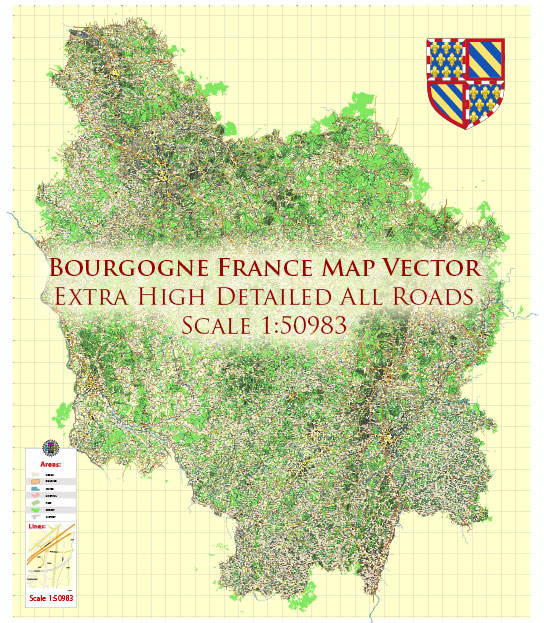Bourgogne, also known as Burgundy in English, is a historic and renowned region in eastern France, famous for its wine production, rich cultural heritage, and picturesque landscapes. Here’s an overview of its economical description:
- Wine Production: Bourgogne is primarily known for its world-class wine production. The region is home to some of the most prestigious vineyards and wineries in the world. The wine industry plays a significant role in the region’s economy, contributing to its international reputation and drawing tourists from around the globe.
- Agriculture: Besides wine, Bourgogne has a strong tradition of agriculture. The region produces a variety of agricultural products, including cereals, vegetables, and livestock, which contribute to the local economy.
- Tourism: Bourgogne is a popular tourist destination, attracting visitors with its charming villages, historic towns, and beautiful countryside. Tourism is a significant driver of the regional economy, supporting various businesses such as hotels, restaurants, and local shops.
- Manufacturing: Bourgogne has a diverse manufacturing sector, including the production of machinery, electronics, and food products. The region has several industrial zones, which support manufacturing activities and provide employment opportunities.
- Services: The service sector, including retail, healthcare, education, and professional services, plays a crucial role in Bourgogne’s economy. Dijon, the regional capital, is a hub for various administrative and financial services.
- Education and Research: Bourgogne hosts several educational and research institutions, including the University of Burgundy and various research centers. These institutions contribute to the knowledge economy of the region and provide employment opportunities.
- Transportation and Logistics: Bourgogne’s central location in France makes it a transportation hub. It benefits from good road and rail networks, making it an important transit point for goods and people moving across France and Europe.
- Employment and Labor Market: The region’s labor market is influenced by its economic sectors, with wine production, agriculture, and tourism providing seasonal employment opportunities. The service sector and manufacturing also offer stable employment options.
- Infrastructure and Connectivity: The region invests in infrastructure, including transportation networks, to facilitate economic growth and connectivity within Bourgogne and with neighboring regions and countries.
- Challenges: Like many regions, Bourgogne faces economic challenges, including the need to adapt to changing consumer preferences and environmental concerns within the wine industry. It also grapples with the balance between preserving its rich heritage and promoting economic development.
Overall, Bourgogne’s economy is diverse, with a strong focus on wine production, tourism, agriculture, and various service and industrial sectors. The region’s economic development is closely tied to its cultural and natural heritage, making it a unique and economically vibrant part of France.


 Author: Kirill Shrayber, Ph.D.
Author: Kirill Shrayber, Ph.D.